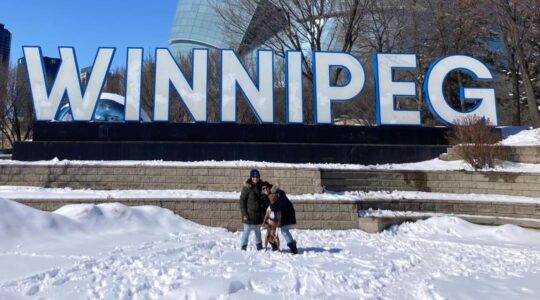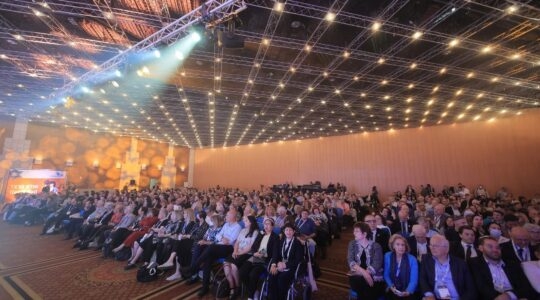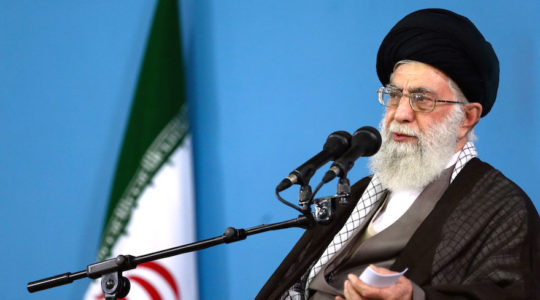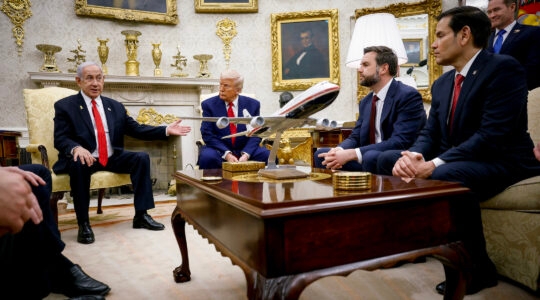For the first time since World War II, one of Prague’s most historic synagogues has held a Jewish worship service.
Kol Nidre, the introductory service of Yom Kippur, took place in the Klausen Synagogue on Friday night, ending a hiatus that lasted more than 80 years and encompassed both the murder and suppression of Czech Jewry.
Originally erected in 1573 and rebuilt after a fire in 1694, the Klausen Synagogue is the largest synagogue in Prague’s Jewish Quarter and once served as a central hub of Jewish life. It’s known as the home of several prominent rabbis and thinkers, from Judah Loew — a 16th-century Talmudic scholar also known as the Maharal of Prague — to Baruch Jeitteles, a scholar associated with the Jewish Enlightenment movement of the 18th and 19th centuries.
But for more than 80 years after the Holocaust decimated Czech Jews, the Klausen Synagogue held no services.
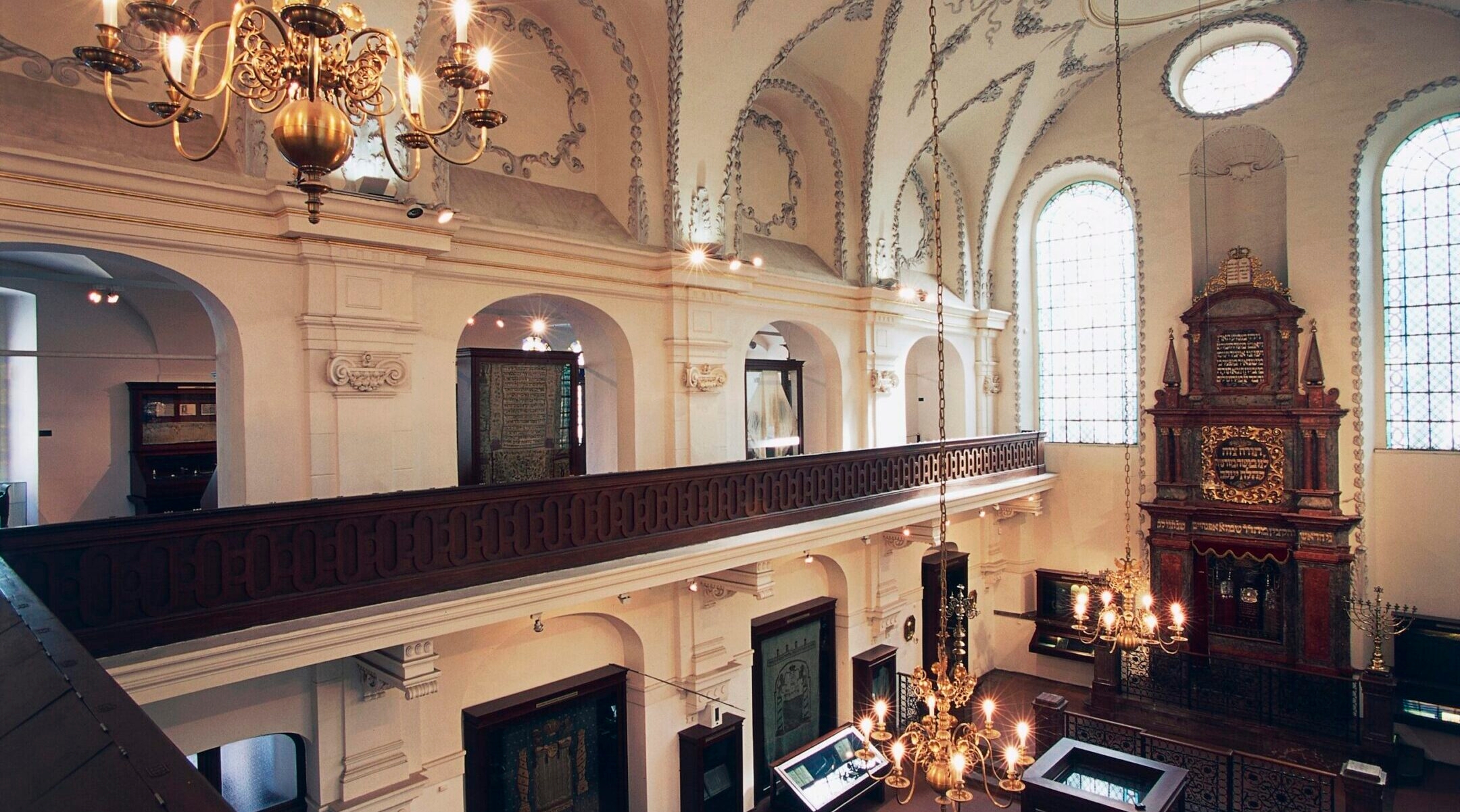
The Klausen synagogue, erected in 1694 in the Jewish quarter of Prague, was added to the UNESCO World Heritage List in 1992, when it was not in use as a synagogue. (DeAgostini/Getty Images)
That was until Friday evening, when about 200 people poured in for a service led by Rabbi David Maxa, who represents Czechia’s community of Progressive or Reform Jews. That community was joined by guests and Jewish tourists from around the world for Yom Kippur, according to Maxa. He saw the moment as a sign of Jewish life resurging in Prague.
“It’s quite remarkable that there is a Yom Kippur service in five historic synagogues in Prague,” Maxa told the Jewish Telegraphic Agency.
Under German occupation in World War II, the Klausen Synagogue was used as a storage facility. Although the Nazis and their collaborators killed about 263,000 Jews who lived in the former Czechoslovak Republic, they took an interest in collecting Jewish art and artifacts that they deemed valuable enough to preserve. The Jewish Museum in Prague was allowed to continue storing those objects, and the synagogue became part of the museum’s depository.
After the war, there were not enough survivors to refill services in the synagogues of Prague. The country became a Soviet satellite in 1948, starting a long era in which Jews were often persecuted and surveilled for following any religious practices. The last Soviet census of 1989 registered only 2,700 Jews living in Czech lands.
“During Communist times, it was very difficult to relate to Jewish identity,” said Maxa. “People who visited any kind of synagogue were followed by the secret police, and only after the Velvet Revolution in 1989 did it become possible for people to visit synagogues without the feeling of being followed and put on a list.”
After the end of communism, some synagogues returned to use by the few Jews who still identified as such. Two of the six synagogues that still stand in the Jewish Quarter now are in regular use as houses of worship.
But the Klausen Synagogue, which was added to the UNESCO World Heritage list in 1982, remained part of the Jewish Museum, hosting exhibitions about Jewish festivals, early Hebrew manuscripts and Jewish customs and traditions.
Museum director Pavla Niklová said returning the synagogue to use for Yom Kippur happened almost by accident. Maxa was asking if she knew about a space large enough to host his growing congregation, Ec Chajim, for the holiest day in the Jewish calendar — its own space, which opened four years ago about a 20-minute walk away, could not accommodate the crowds expected for Yom Kippur.
Since the museum had just taken down its exhibition in the Klausen Synagogue after 28 years, she had an answer. The clean, empty space was ready to be refilled with Jewish life.

Congregants from Ec Chajim pray in Prague’s Klausen Synagogue on Yom Kippur, Oct. 11, 2024. (Dana Cabanova; courtesy of the Jewish Museum in Prague)
Visiting the synagogue just before Yom Kippur, Niklová said she was awed to see the building returned to its original purpose. She hopes that it will continue to be used for large services.
“I felt like the synagogue started breathing again,” she told JTA. “I believe it was a good move to take down the old exhibit, and now we can start anew.”
For many in Prague’s Jewish community, which is largely secular, Yom Kippur is the single most important service of the year. Even Jewish families that suppressed religious practices under Communism often passed on the memory of Yom Kippur, said Maxa.
Maxa founded Prague’s Progressive Jewish community in 2019, responding to a growing number of people who sought to explore their Jewish roots. The community currently has 200 members and adds about five more every month.
“Often, I meet people who simply want to learn about the culture, tradition and religion of their grandparents,” said Maxa. “They say, my grandmother and grandfather were Shoah survivors — can I come and learn more about Judaism? We offer a wide range of activities, including of course regular services, but also educational courses to help these people reconnect with the tradition.”
Maxa, who himself grew up in Prague with little connection to his Jewish roots, wants to revive some of the rituals that threaded through Prague’s pre-war Jewish world — including a tradition of organ accompaniment in the city’s synagogues. On Friday, Jewish organist Ralph Selig performed during his service.
Like many of his congregants, Maxa’s family history intertwines with the losses of the last century. His father came from Prague and survived the Holocaust. He does not know if his father visited the Klausen Synagogue, but he knows it was a familiar part of his world.
“It means a lot for me that the tradition was not exterminated, and that this is coming back, even to a place where no services were held since World War II,” he said.
JTA has documented Jewish history in real-time for over a century. Keep our journalism strong by joining us in supporting independent, award-winning reporting.


